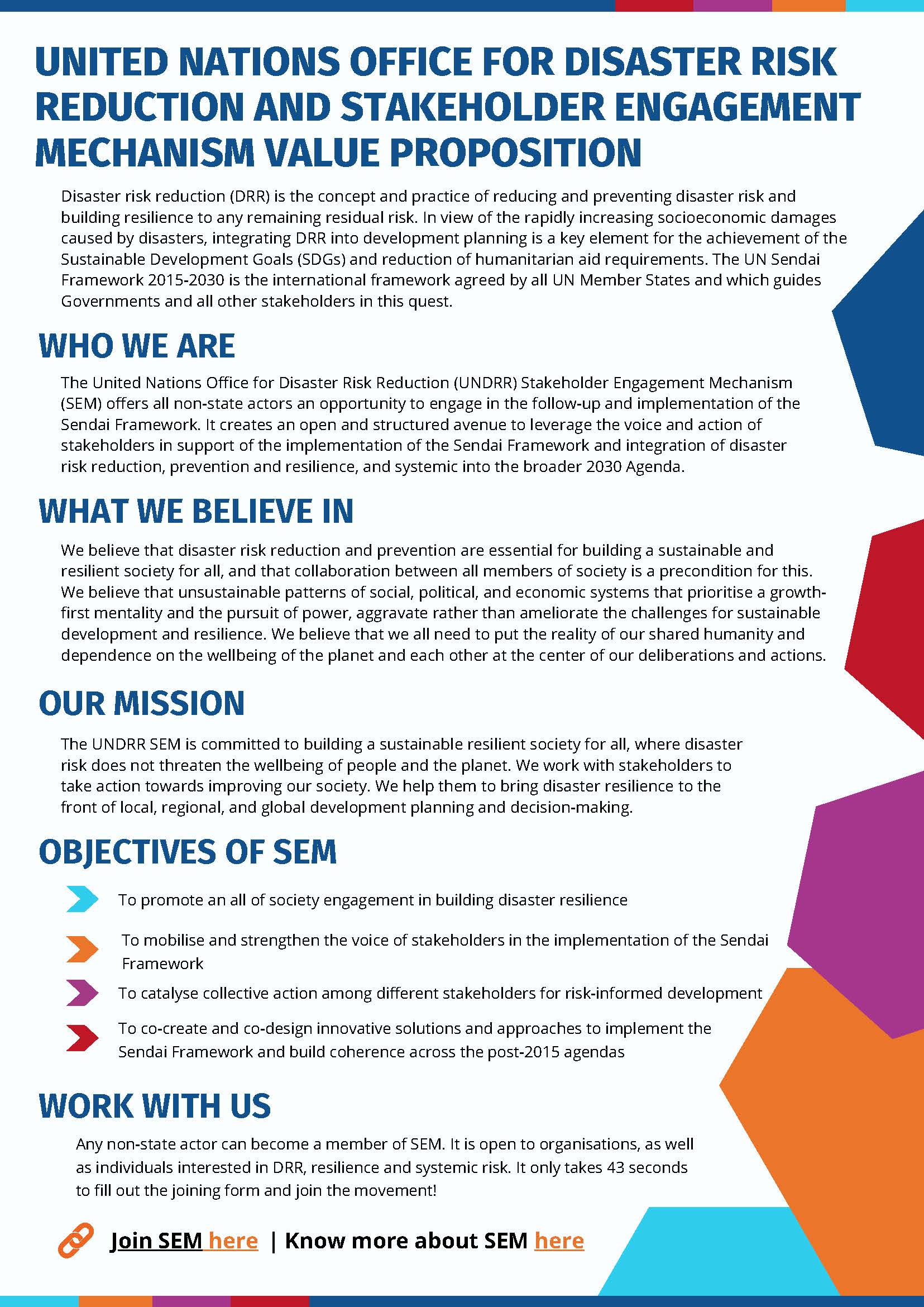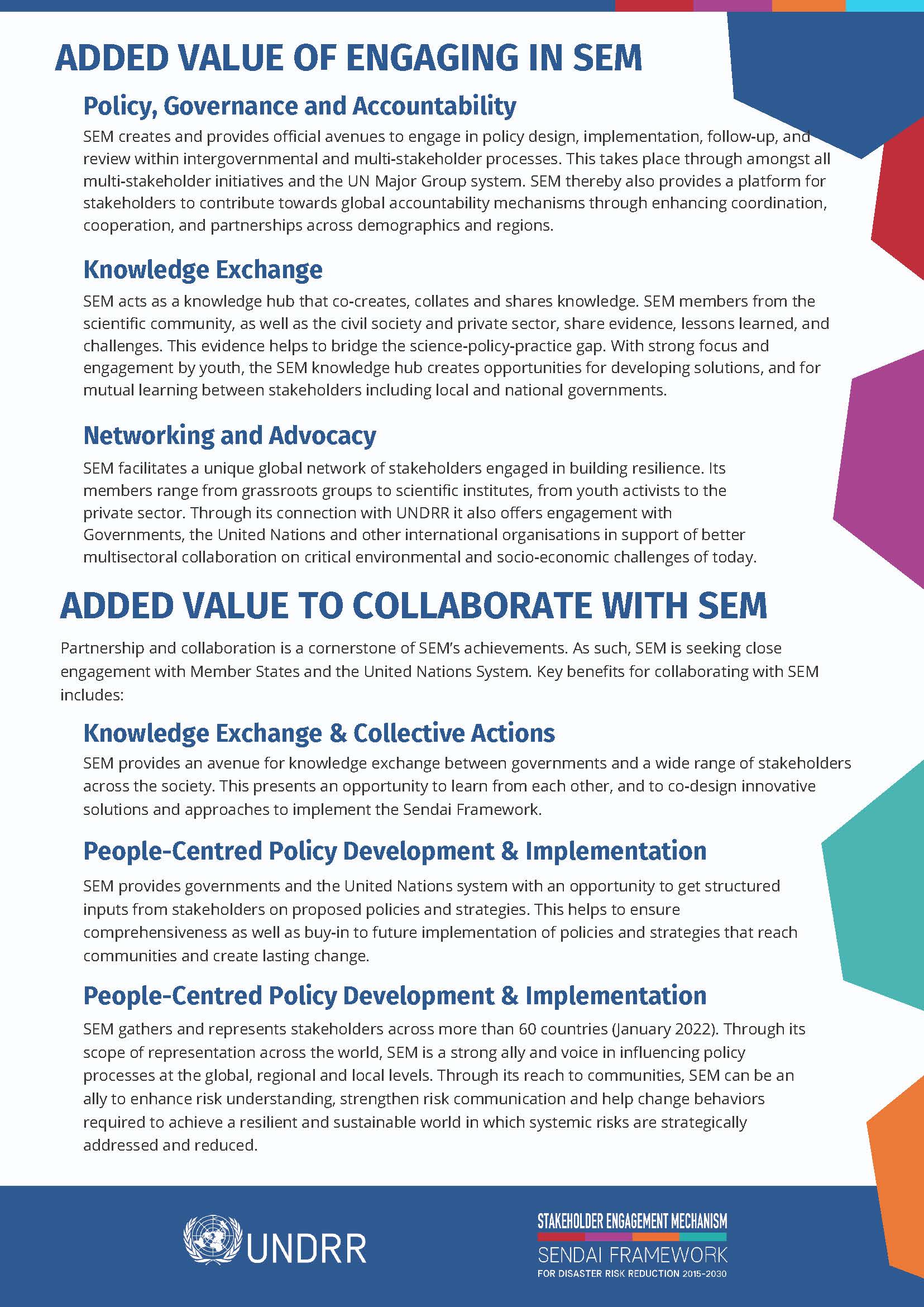Explore further
One of the key goals of (non-State) stakeholders is to engage in intergovernmental decision and policy making processes through access to intergovernmental processes and events. To address this, nine major groups were established for the first United Nations Conference on Environment and Development in 1992 as main channels through which broad participation would be facilitated in UN activities related to sustainable development.
Today, these groups make up a total of 17 Major Groups and other stakeholders (MGoS), the majority of which represent civil society and community-based organizations and demonstrate a high level of engagement in all major intergovernmental processes related of the 2030 Agenda. In 2018, UNDRR set up the "UNDRR Stakeholder Engagement Mechanism" (UNDRR-SEM) to leverage the convening and advocacy powers of the MGoS for the integration of disaster risk reduction into the broader 2030 Agenda.
The UNDRR-SEM creates an open and structured avenue for close engagement of stakeholders in the implementation of the Sendai Framework through key global, regional and national policy processes. As the main interlocutor between UNDRR and stakeholders, key functions of the UNDRR-SEM include to:
- Build an inclusive and broad movement for the implementation of the Sendai Framework;
- Create avenues to influence policy design and implementation;
- Strengthen citizen-led and social accountability mechanisms;
- Promote coordination, information exchange and harmonization between stakeholder groups.
Learn more about the Stakeholder Engagement Mechanism.

Voluntary Commitments
The Sendai Framework Commitments (SFVC) online platform serves to incentivize stakeholders to inform the public about their work, to provide a vehicle for sharing commitments and initiatives and for motivation toward the implementation of the Sendai Framework. In turn, UNDRR can monitor and take stock of the progress and impact.
Stakeholder Engagement Mechanism (SEM) is involved in the following commitments:

